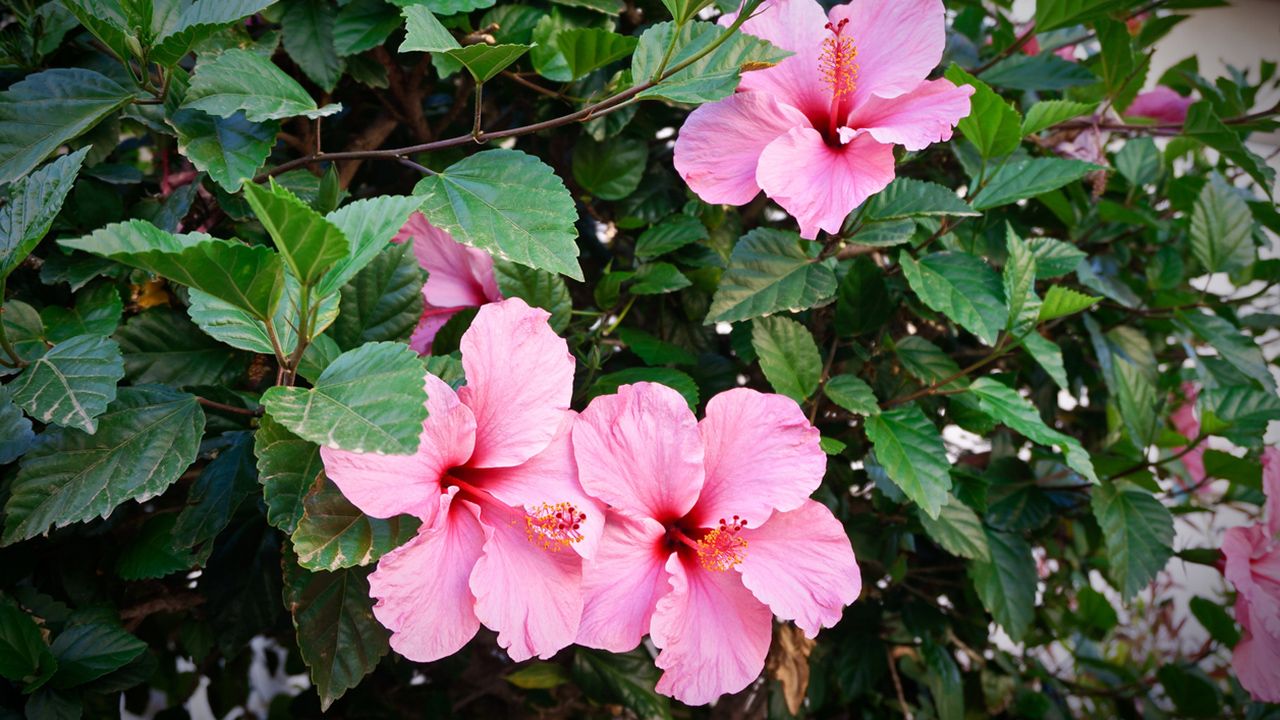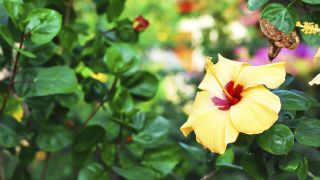Table of contents
General characteristics:
- Common name: Hibiscus, Chinese rose, cayenne pepper
- Scientific name: Hibiscus Rosa-Sinensis
- Origin: Tropical Asia
- Family: Malvaceae ( Malvaceae)
- Location: Exterior
- Flowering: Summer continues in tropical climates
- Light: In full sun
- Ideal temperature: 13-21ºC, although some varieties can withstand up to -15ºC.
- Irrigation: Abundant without waterlogging
- Credit memo: While it is flowering we fertilize it every 15 days.
Description of hibiscus
If you want to give a Mediterranean touch to your patio the best choice is the floral burst of the hibiscus, an evergreen shrub which can reach five meters in height if planted in the garden and two meters in pot .
The leaves are oval with slightly serrated edges, dark green and very shiny.
The flowers which have different sizes and colors depending on the variety, are very striking .
They are characterized by five petals forming a funnel from the center of which emerge long stamens with yellow anthers that surpass the corolla.
The color is varied There are already red, yellow, orange, pink, white, blue or purple varieties.
In the tropical climates, flowering occurs throughout the year but in our climate, their flowers attract the attention of mid-summer to early fall .
Plant it in a soil-based pot and water it regularly in summer. Add slow-release granular fertilizer to the compound in spring.
Light and temperature hibiscus
Due to its origin, it requires warm climates that are maintained between 14 and 18 degrees It should be placed away from cold and frost, in a well-lit place with some sunlight during the first hours of the day.

Hibiscus watering and fertilization
Irrigation must be abundant during the summer The soil should be kept moist at all times during the flowering season.
It is important to avoid puddling with good drainage. In winter hardly needs water .
If grown indoors, the leaves should be sprayed regularly to create a moist environment.
Add slow-release granular fertilizer to the compound in spring and, in bloom, fertilize the hibiscus every fifteen days.
Hibiscus pruning
To make the flowering really spectacular, prune the plant in spring .
Start by trimming the previous year's shoots to maintain an attractive, bushy shape. Remove dead, damaged or tangled branches, which can damage each other.
Finally, also cut some old stems to prevent it from growing too congested.
Pests and diseases of hibiscus
This plant is especially sensitive to aphids, mealybugs and red spider mites, although whiteflies and the leaf-sawing bee should also be avoided.
If its leaves turn yellow, may be due to a overwatering or lack of nutrients.
This can be solved by reducing watering and using fertilizer once a fortnight. If, on the other hand, the plant pull the buds or buds before opening them, may be due to cold or too dry environment .
Curiosities of the hibiscus
The hibiscus, as a medicinal plant stands out for its digestive, antioxidant, liver and kidney stimulating function .
In addition, red hibiscus is a favorite refreshment in some African countries. Just make an infusion with the dried leaves, add sugar or honey and let it cool in the fridge. Great!
 How to transplant a Hibiscus
How to transplant a Hibiscus
We are going to transplant two hibiscus plants, one of them directly in the garden and one in a pot.

